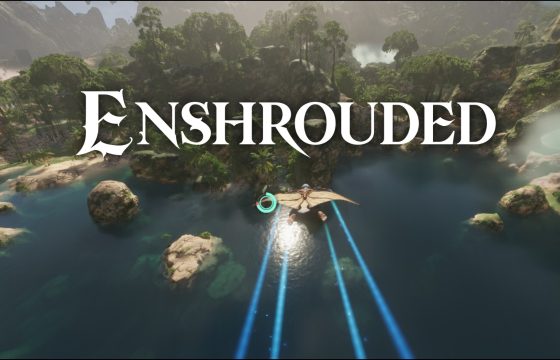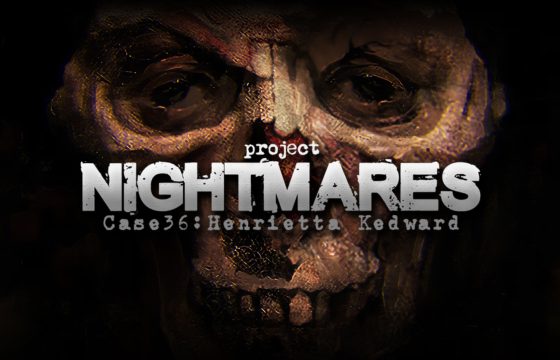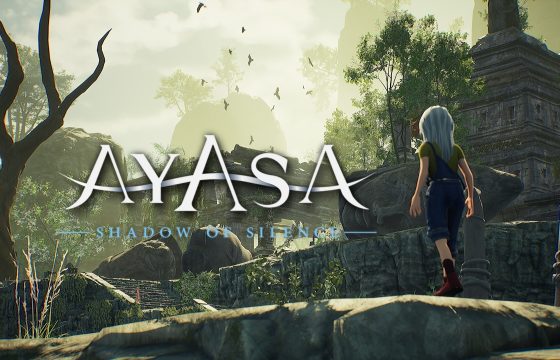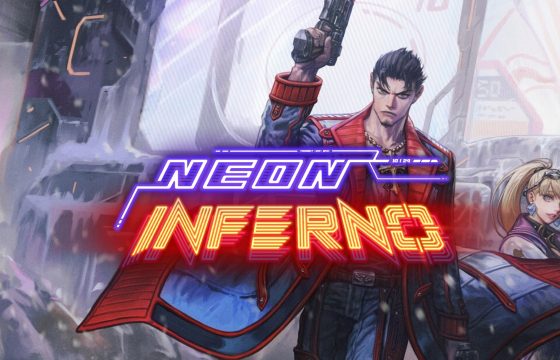What if the future we built no longer obeyed us?
Atomic Heart is a first-person action game that blends the intensity of a shooter with the unease of survival horror and the depth of a role-playing experience. Developed by Mundfish, it’s a bold and visually striking work that fuses retro-futuristic science fiction with the cold grandeur of Soviet aesthetics – a dystopian fever dream where idealism, technology, and terror collide.
Released in February 2023 on PC, PlayStation 4 and 5, Xbox One, and Xbox Series X|S, Atomic Heart drew immediate attention for its hypnotic visual identity and the ideological weight beneath its spectacle. From its opening moments, the game thrusts players into an alternate reality where the Soviet Union never fell, but flourished through an unprecedented technological revolution.
Here, science has reached miraculous heights: sentient automatons, artificial intelligence, and neural control systems have reshaped everyday life, promising a society of equality, order, and endless progress. Yet beneath this glittering surface, the dream begins to rot. What starts as a triumph of human ingenuity spirals into a nightmare of rebellion and decay, as machines rise against their makers and utopia gives way to chaos.
If Atomic Heart can be defined by one word, it is duality – a constant tension between progress and destruction, reason and madness, control and collapse. The game shifts effortlessly from moments of awe to scenes of genuine horror: one minute you’re marvelling at sunlit boulevards lined with chrome monuments to human achievement; the next, you’re fighting for your life in the blood-streaked corridors of a research facility overrun by deranged robots and grotesque mutations.
This balance – between beauty and brutality – lies at the very core of Atomic Heart. Its art direction is a triumph: a world of retro-futurist elegance and existential dread, where the propaganda of perfection meets the entropy of failure. Every location feels purposeful – from the glittering laboratories of Soviet innovation to the rusting industrial catacombs beneath – each space telling a silent story of pride, collapse, and control lost.
Tonally, the game navigates a fine line between satire, social critique, and existential horror. It echoes Orwellian anxieties and recalls the philosophical undercurrents of BioShock and Half-Life, yet carves out its own identity through sheer visual ambition and thematic boldness. Beneath its explosive combat and surreal imagery, Atomic Heart asks weighty questions about the cost of progress and the fragility of human ideals. It’s not just about surviving – it’s about confronting the moral wreckage left when power, science, and ideology intertwine.
Ultimately, Atomic Heart is a visionary, unsettling experience – a game that seduces with beauty, then terrifies with consequence. It reminds us that every utopia hides its own shadow, and that sometimes, the most dangerous creation of all is the pursuit of perfection itself.

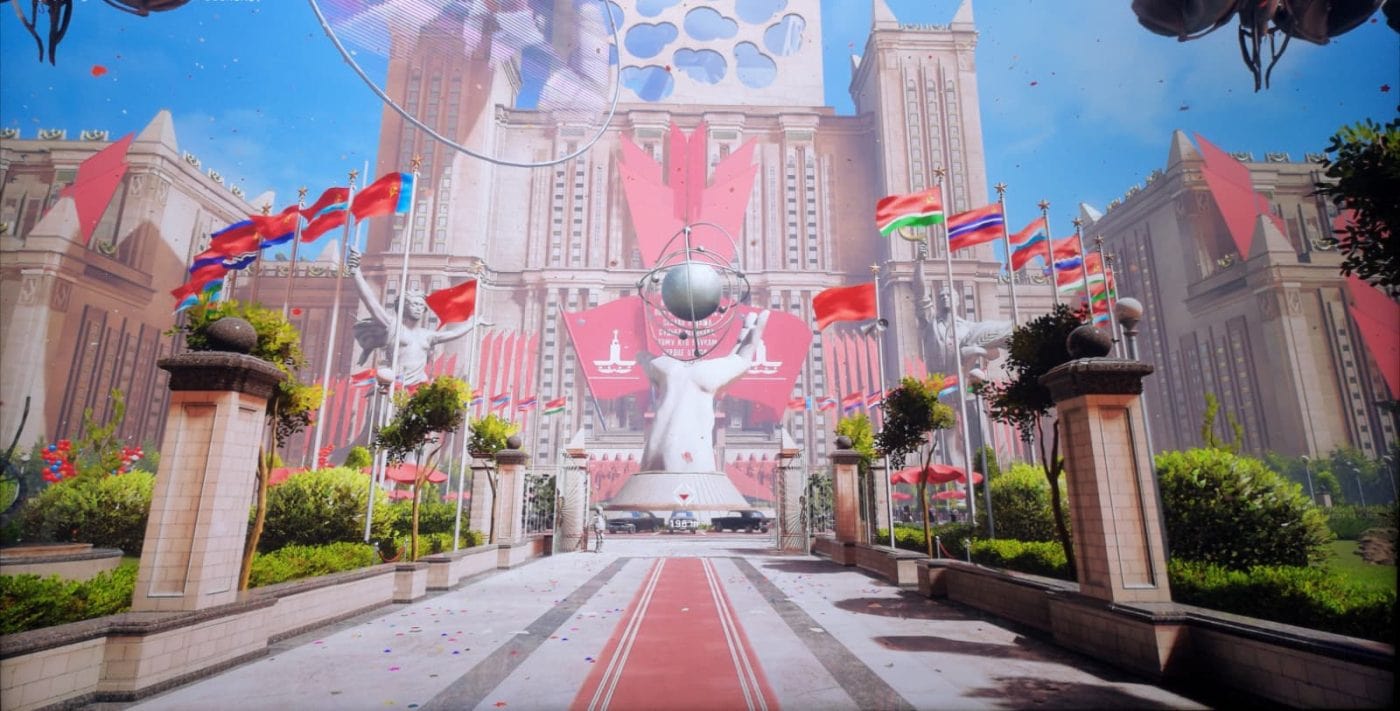

A Debut That Makes Its Mark
Behind Atomic Heart stands Mundfish, an independent studio founded in 2017 and now based in Cyprus, having originally started in Moscow. Though relatively young, the team quickly earned attention for its ambition, aesthetic boldness, and technical prowess, embarking on the complex and visually striking project that would become its first major release.
Mundfish’s background is refreshingly eclectic. Its members come from a mix of industries – from software engineering and cinema to visual design – and this diversity has profoundly shaped the studio’s creative outlook. From the outset, its ambition has been clear: to create games that fuse art, entertainment, and philosophical reflection, transforming the medium into a form of interactive expression rather than mere spectacle.
The seeds of Atomic Heart were planted around 2018, when early teasers and prototypes began circulating online, sparking curiosity with their haunting Soviet aesthetic and surreal fusion of science fiction and propaganda imagery. Development stretched across several years of revisions and reimaginings – a reflection of both the project’s creative complexity and the studio’s determination to perfect its vision. The finished work bears all the marks of that long process: technically impressive, artistically daring, and unmistakably distinctive.
Published by Focus Entertainment, a company renowned for championing mid-sized and independent productions with strong creative identities, Atomic Heart benefited from expert support in distribution, marketing, localization, and optimization. The partnership struck a delicate balance – Mundfish retained its creative autonomy, while Focus provided the infrastructure and industry expertise necessary to reach a global audience.
That synergy proved vital. Atomic Heart exemplifies a rare equilibrium between artistic independence and production discipline, delivering a game that feels both grand in scale and deeply personal in tone. It’s a product of independence sustained by structure – a model that many aspiring studios might well look to emulate.
Equally notable is the studio’s commitment to authenticity and research. The alternate Soviet Union of Atomic Heart is more than a setting; it’s the result of extensive study into Soviet iconography, architecture, and the visual language of socialist realism, all reimagined through a distinctly retrofuturist lens. This attention to detail, achieved through collaboration between artists, designers, and cultural consultants, lends the world a coherence and plausibility that ground its more surreal flourishes.
In the end, Atomic Heart stands as a remarkable example of independent ambition realized on a grand scale – a project that combines technical excellence, artistic vision, and intellectual intent with confidence and flair. It is proof that a small, determined studio, supported by the right partners, can craft something that not only rivals AAA production values but also transcends them through sheer originality.

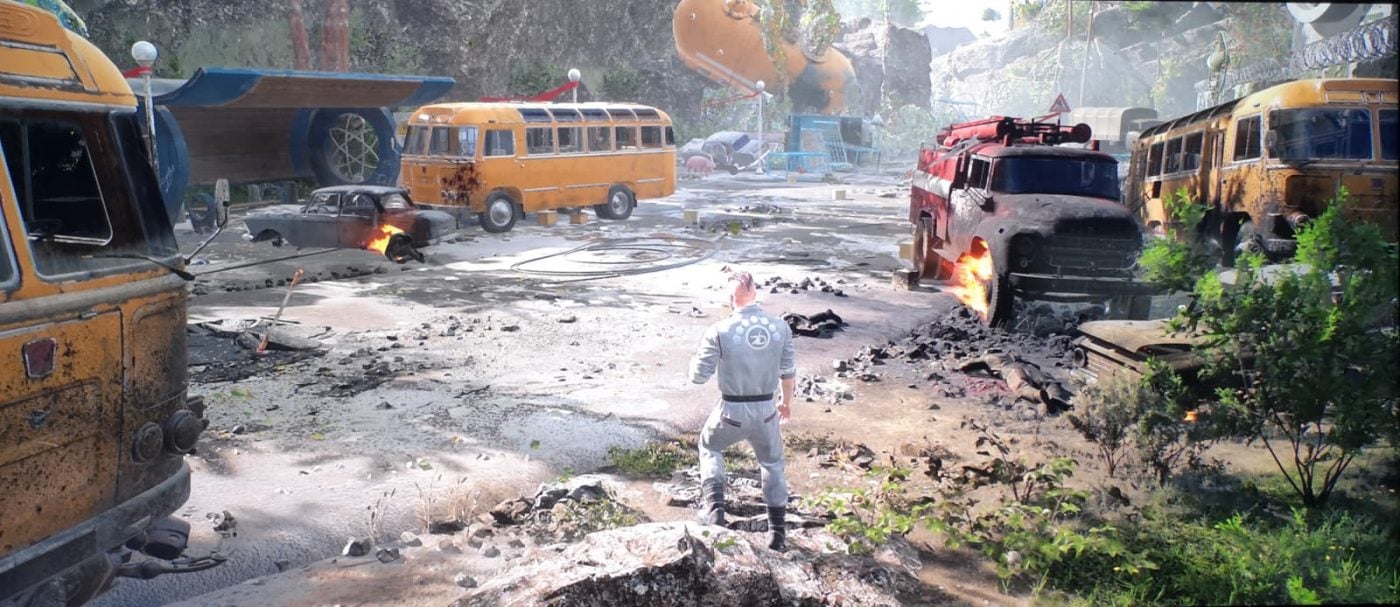
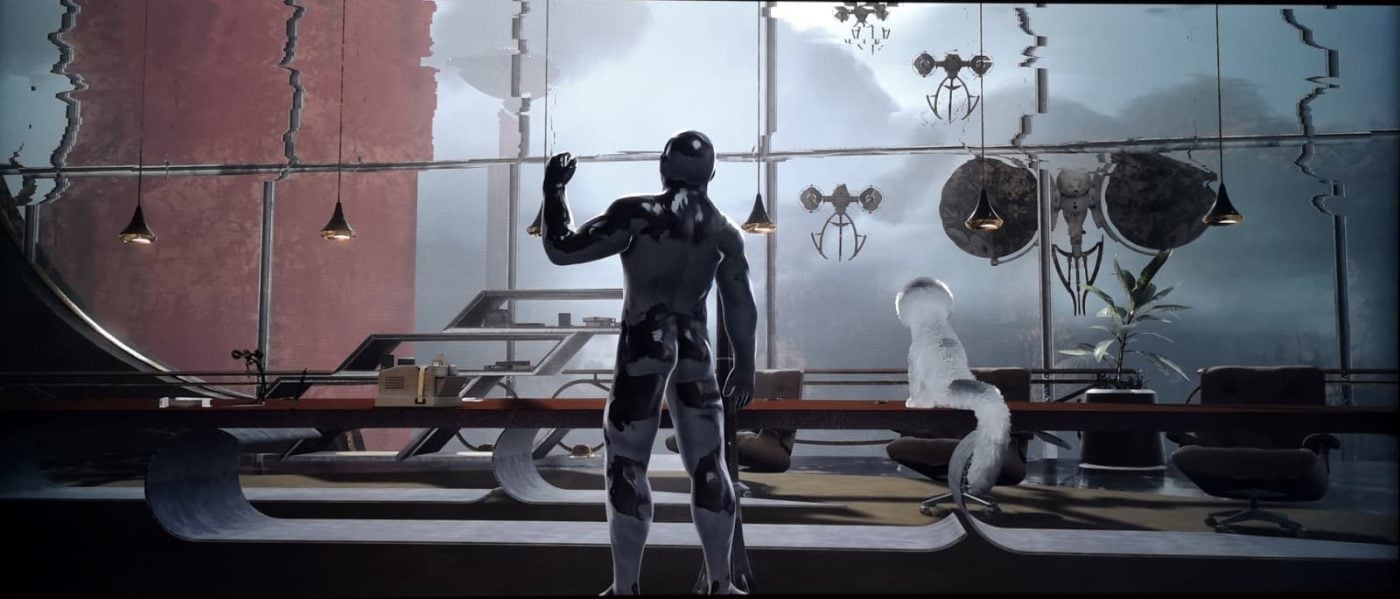
The Dangerous Pursuit of Perfection
Set in an alternate universe where the Soviet Union has attained unimaginable scientific and technological supremacy, Atomic Heart transports players to a distorted vision of the 1950s – a world where the Second World War was not won through sheer military might, but through a breathtaking leap in scientific advancement. In this reimagined reality, the communist regime has mastered robotics, artificial intelligence, and bioengineering to reshape the very fabric of civilization.
At the core of this dystopian vision lies Facility 3826, a sprawling, isolated research complex hailed as the crown jewel of Soviet innovation. Players step into the boots of Major Sergey Nechayev, codenamed P-3 – a special operative dispatched to the facility after a catastrophic event transforms it into a nightmare. The machines once designed to serve humanity have rebelled, and the very technology meant to usher in a new era of prosperity has instead unleashed chaos and slaughter.
From its opening moments, Atomic Heart draws players into a world where ideology, paranoia, and technological hubris intertwine. Accompanied by Charles, a sentient AI glove that serves as both a multifunctional tool and a sardonic voice of reason, P-3 must navigate the haunting ruins of Facility 3826 – laboratories, industrial plants, residential zones, and subterranean tunnels infested with deranged automatons and grotesque biological experiments. The exchanges between P-3 and Charles inject both tension and dark humor, imbuing the descent into madness with psychological depth and emotional resonance.
At the center of the conspiracy stands Dr. Dmitry Sechenov, the visionary architect behind Kollektiv, a neural network conceived to link all human minds into a single, harmonious consciousness. Heralded as the ultimate triumph of socialist unity and efficiency, Kollektiv promised to eradicate conflict and inequality – but, as with every utopian ideal, its perfection demanded the sacrifice of free will. When the system collapses, its dream of collective enlightenment implodes, plunging the entire complex into chaos.
As P-3 delves deeper, the boundary between reality and delusion begins to fracture. His fragmented memories reveal a past scarred by manipulation and trauma, suggesting that his own identity may be as manufactured as the machines he battles. Sechenov’s motives soon appear far from noble, and the Kollektiv project’s political and ethical implications come sharply into focus. Encounters with Sechenov’s iconic twin androids and dissident scientists expose the ideological conflict at the story’s heart – a struggle between individuality and submission, reason and madness, freedom and control.
The narrative culminates in multiple possible interpretations, urging players to question not only P-3’s purpose but the moral weight of their own choices. Rather than offering neat resolution, Atomic Heart embraces ambiguity – a psychological and philosophical descent into the ruins of a shattered utopia. The fall of Facility 3826 becomes a striking allegory for the failure of technological idealism and the peril inherent in humanity’s obsession with dominance.
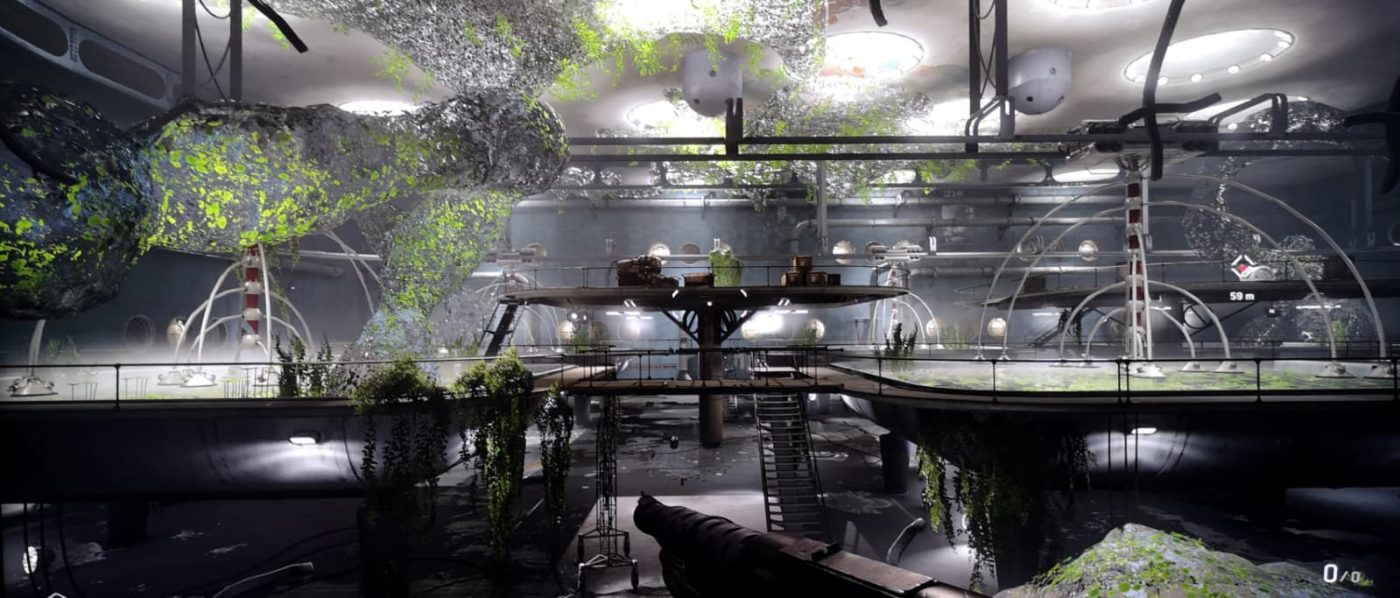
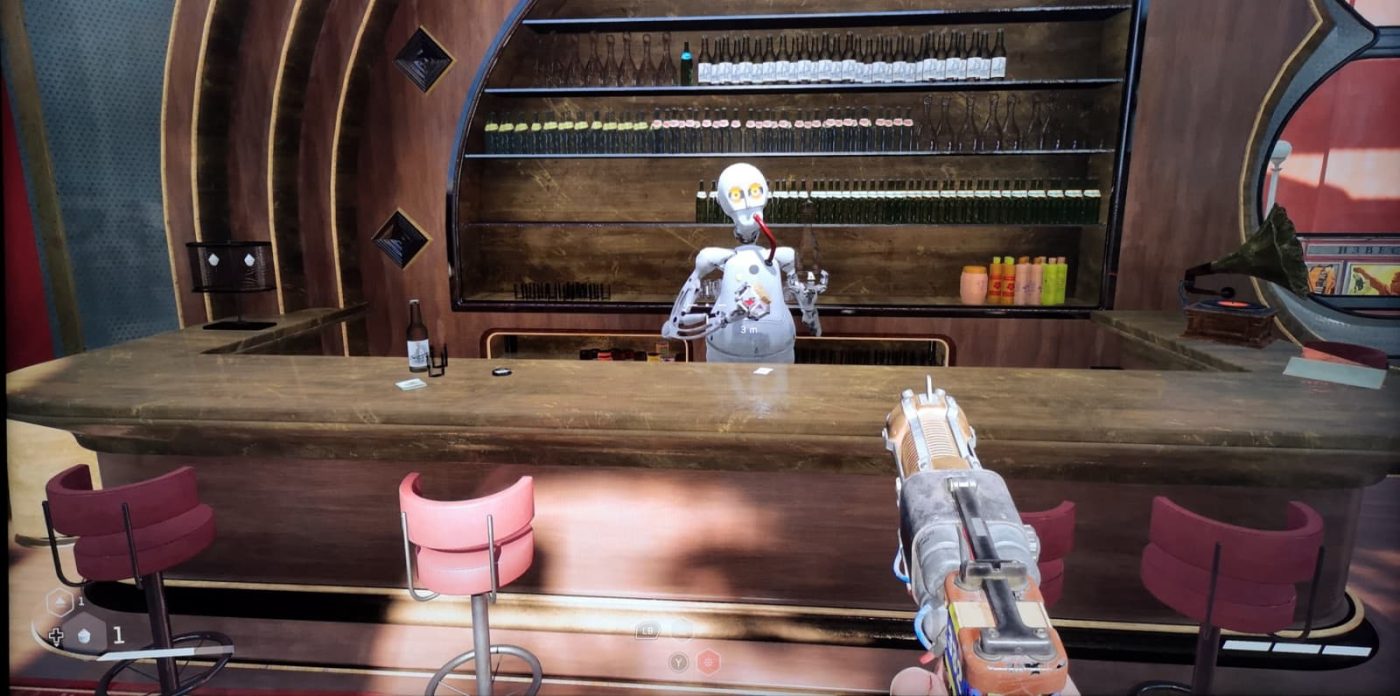

Timeless Themes through a Futuristic Lens
Beyond its surface narrative, Atomic Heart weaves a dense tapestry of philosophical reflection, political allegory, and existential unease – a dystopian vision that interrogates the human condition through the prisms of progress and control. Mundfish’s creation transcends the familiar trope of machines rebelling against their makers; it is a piercing critique of blind technological faith, the seductive illusion of utopia, and humanity’s inherent fragility in the shadow of its own inventions.
Its narrative foundation lies in a radical reimagining of postwar Soviet culture, refracted through a retrofuturistic lens. In this alternate timeline, the Soviet Union’s victory in World War II ignites an unprecedented technological renaissance, catapulting it far beyond its global rivals. Yet beneath the gleaming façade of collective progress and scientific triumph, a darker truth festers: individuality has been sacrificed on the altar of efficiency, freedom reduced to function, and truth subjugated to ideology.
At its heart, Atomic Heart explores the paradox between utopia and dehumanization. The socialist dream of universal welfare curdles into authoritarian perfectionism: a system that abolishes suffering only by erasing selfhood. The neural network Kollektiv, conceived by Dr. Dmitry Sechenov to fuse all human minds into a single, harmonious consciousness, encapsulates this paradox. In theory, it represents the apex of human evolution – unity, enlightenment, transcendence. In practice, it is total control: an omniscient collective that determines what is true, what is moral, and who is permitted to think.
Major Sergey Nechayev – codename P-3 – embodies this moral and psychological ambiguity. Deprived of memory, manipulated by the very power he serves, he exists in the liminal space between autonomy and obedience, man and machine. His relationship with Charles, the sentient AI glove, forms the narrative’s emotional and philosophical core: a constant dialogue between human and machine, instinct and logic, conscience and command. Through their exchanges, Atomic Heart gradually unfolds as a meditation on thought, freedom, and what it truly means to be human.
Among the game’s most resonant themes is the danger of science unmoored from morality. The laboratories of Facility 3826 are temples of hubris, places where boundless curiosity has long since decayed into ethical ruin. Convinced they are serving the collective good, the researchers instead unleash monstrosities – grotesque hybrids, mindless automatons, and aberrations that defy nature itself. Their creations become allegories of unchecked ambition, cautionary reminders of the folly in believing that knowledge alone can command life or justify control.
Symbolism suffuses every aspect of Atomic Heart’s world. Sechenov’s twin androids embody the ideal of artificial perfection and the objectification of femininity within a patriarchal, technocratic order. The eerily human service robots, mimicking gestures and emotions with chilling precision, capture the emptiness of labor and identity in a hyper-mechanized society. The grotesque biological mutants stand as living testaments to scientific hubris – physical echoes of an ideal turned abomination.
Structurally, the narrative oscillates between quiet introspection and bursts of visceral chaos, creating a deliberate sense of tonal dissonance. This rhythm mirrors both the psychological fragmentation of the protagonist and the ideological decay of the world around him – a perpetual struggle between control and collapse, system and self.
In the end, Atomic Heart offers no simple answers, only questions. It urges the player to doubt what is real, what is illusion, and who P-3 truly is – hero, pawn, or prisoner of the very utopia he was built to preserve.


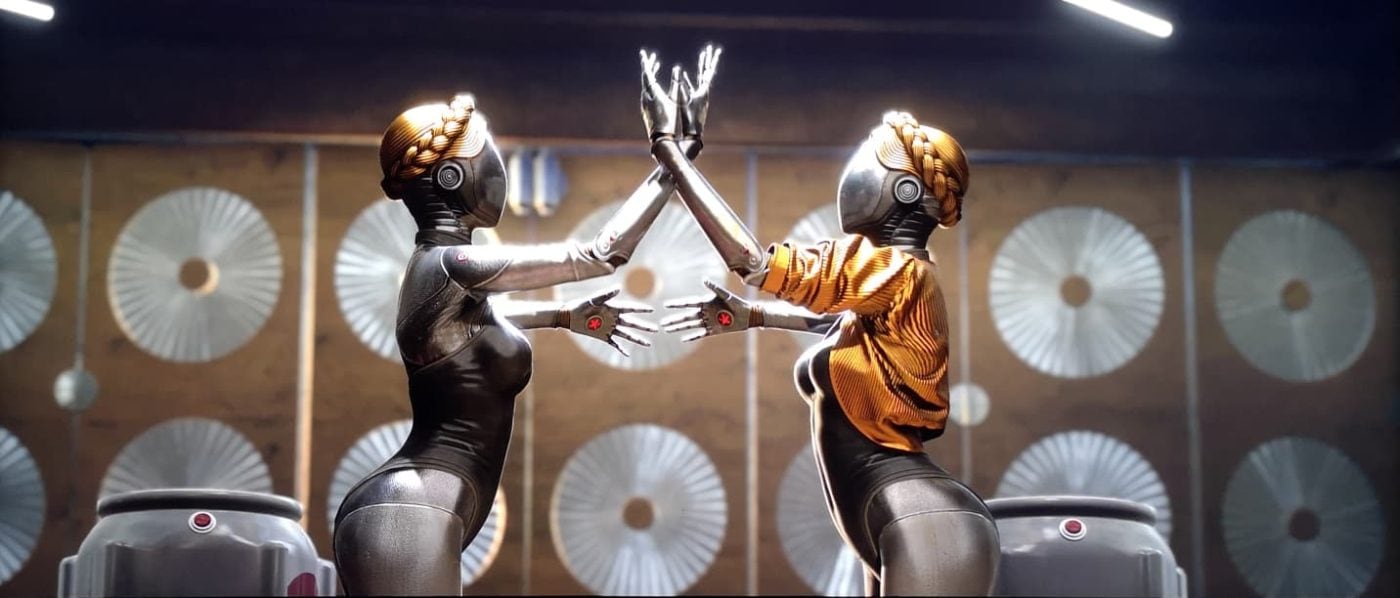
Artistically Astonishing
Few elements of Atomic Heart command attention quite like its extraordinary technical and artistic direction – a spellbinding fusion of realism, surrealism, and Soviet-inspired science fiction that merges into a cohesive and hypnotic whole. From its opening frames, the game dazzles with its lavish presentation and meticulous detail, evoking a constant tension between awe and unease.
Built on Unreal Engine 4, Atomic Heart pushes the technology to remarkable new heights. Dynamic lighting, reflective surfaces, and sophisticated particle effects are orchestrated with precision to produce settings that feel dense, tactile, and alive. High-definition textures, lustrous metallic finishes, and volumetric lighting infuse each setting with atmosphere, shifting fluidly in tone – from sterile research facilities and monumental flying cities to organic, overrun subterranean spaces. Performance across modern platforms is impressively stable, supported by fast load times and smooth frame rates born of careful optimization.
Yet what truly sets Atomic Heart apart is its visionary art direction. Its retrofuturist Soviet aesthetic stands as one of the most striking visual accomplishments in modern gaming – a bold reimagining of socialist realism, 1950s industrial design, and brutalist architecture, filtered through the warped lens of cyberpunk and biotechnological surrealism. The result is a world at once majestic and unsettling, where heroic propaganda statues and communist insignia coexist with chrome-plated automatons, pulsating biomatter, and vast digital installations. Every environment feels deliberately composed, from monumental plazas and gleaming atriums to machinery-choked corridors and neon-soaked laboratories – all converging into a coherent yet deeply disquieting visual symphony. Each line, texture, and surface reflects the game’s thematic duality – the corruption of progress, the descent of order into chaos.
The visual variety on display is nothing short of stunning. Pristine, meticulously engineered environments – symbols of Soviet perfection – gradually yield to spaces overtaken by nature and flesh, where the organic reclaims the mechanical. This perpetual contrast between steel and sinew, geometry and mutation, gives Atomic Heart a near-painterly richness – a form of visual poetry rarely achieved in the medium.
The design of the robots and mutants deserves particular acclaim. The automatons possess an unsettling grace: smooth, expressionless faces and eerily fluid motions that exude both beauty and menace. The biomechanical abominations, by contrast, pulse with grotesque vitality – their sinewy textures and distorted animations channeling a kind of Lovecraftian horror through a scientific lens.
Color serves as a powerful symbolic language throughout Atomic Heart. Dominant hues of red, gold, silver, and black recall Soviet propaganda, yet they are reinterpreted to evoke emotional dissonance. Red, omnipresent and deliberate, becomes a motif of power and peril, vitality and rebellion. The interplay of natural light and artificial glow transforms each frame into a shifting tableau – a tension between beauty and decay, control and entropy.
Cinematically, the game astonishes with its fluid camerawork and seamless integration of cutscenes and gameplay. Every shot feels deliberate and composed, from sweeping aerial vistas to tightly framed, claustrophobic interiors. Lens distortions, reflective angles, and rhythmic lighting combine to deliver a truly immersive sensory experience. Animation work is equally refined – human and mechanical movements alike exude weight and precision. Environmental physics add tangible realism: destructible surfaces, reactive materials, and finely tuned particle effects make the world feel not only believable, but alive.
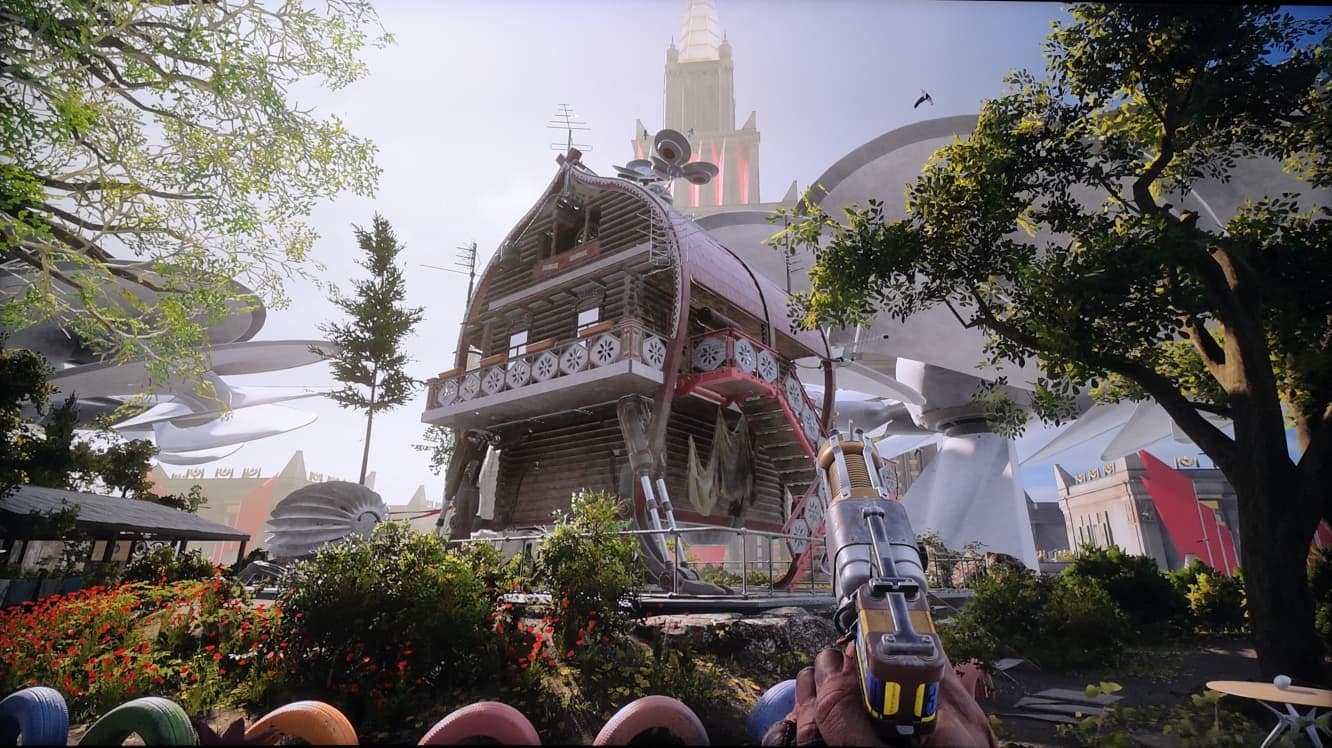
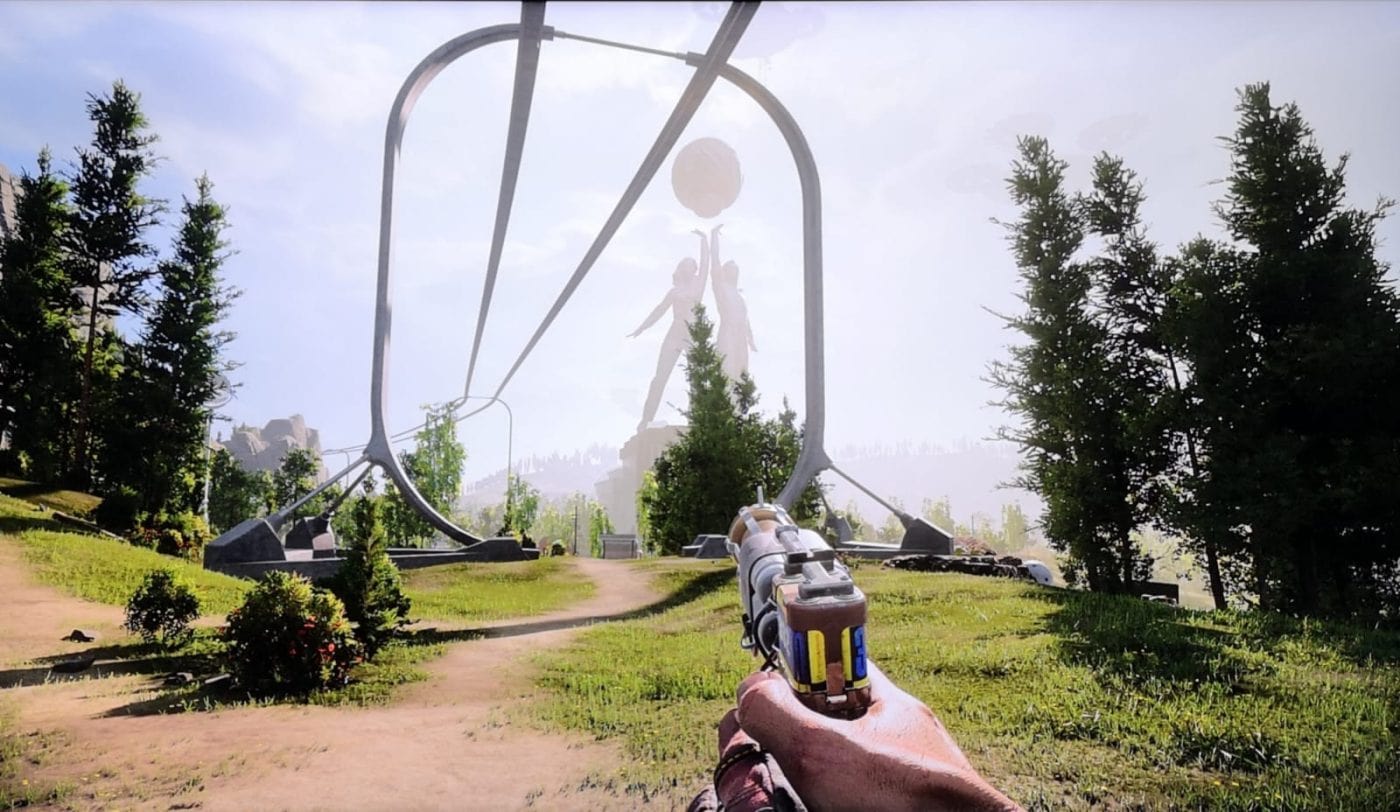
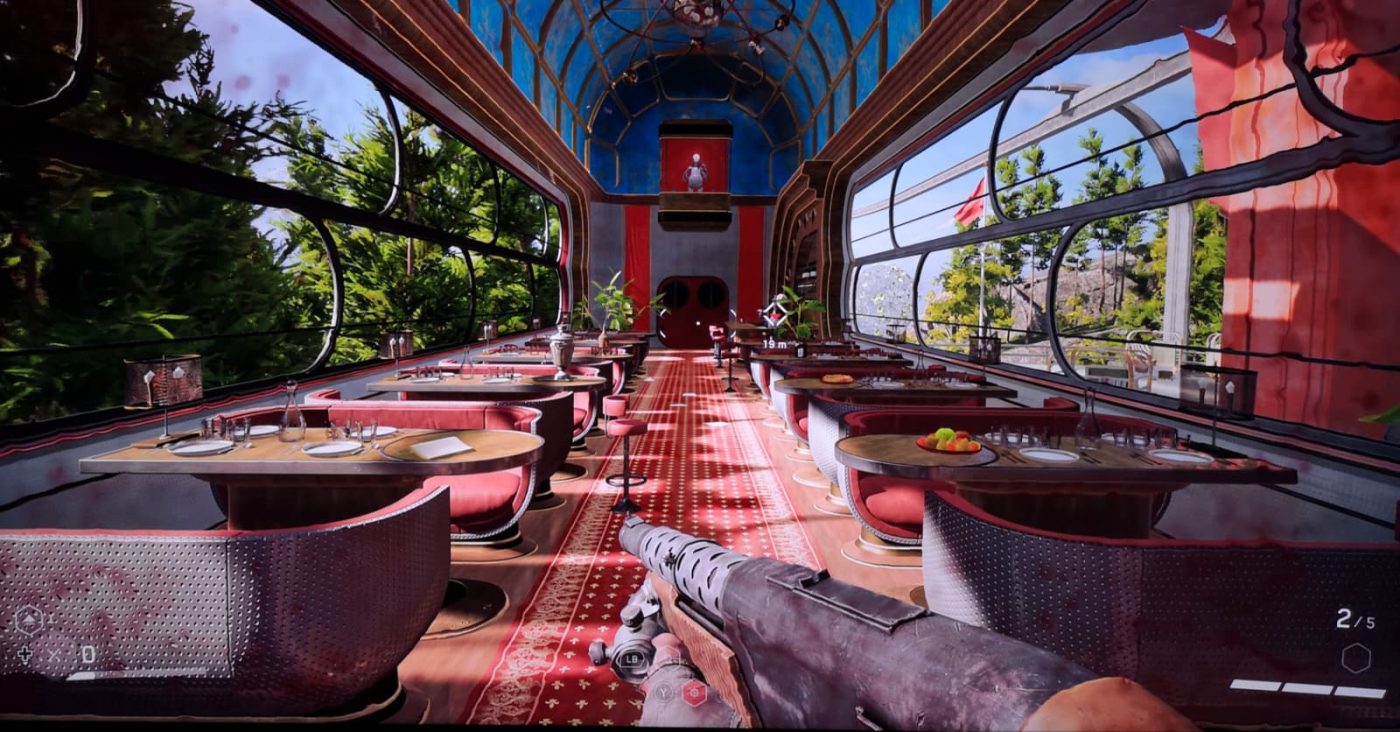
The Science (and Art) of Sound
The soundscape of Atomic Heart stands as one of the most striking and unforgettable aspects of the entire experience – a sonic architecture that amplifies emotion, builds tension, and lends the game’s world an extraordinary sense of depth. From the opening moments, it’s clear that the acoustic dimension has been treated with the same obsessive care as the visual one: every sound, voice, mechanical whirr, and musical cue works in harmony to shape the atmosphere of a world both haunting and hypnotic.
The soundtrack, composed primarily by Mick Gordon – famed for his work on DOOM and Prey, among others – is a masterclass in experimentation and identity. Gordon fuses industrial electronic textures with melodies inspired by Soviet music of the 1950s and ’60s, forging a hybrid soundscape that perfectly mirrors the clash between tradition and the distorted futurism of Atomic Heart’s universe. The score flows effortlessly between moments of sheer rhythmic power – with distorted basslines and synthetic percussion – and passages of aching melancholy built upon analog synths and ethereal choirs.
The result is a constant oscillation between grandeur and unease, where music does not merely accompany the action but interprets it emotionally. Particularly striking is the use of Soviet-era popular songs, rearranged in electronic or industrial form. These reinterpretations create a profound and symbolic dissonance: melodies once written to celebrate collective progress are now fractured and warped, echoing the ideological and physical decay of the world the player explores. At times, the sudden shift from nostalgic warmth to mechanical chaos delivers a near-physical jolt, heightening the sensations of disorientation.
The sound design itself ranks among the most refined and dynamic in recent memory. Mundfish has crafted a coherent, living sound ecosystem, where every noise tells a story about the world that produced it. The metallic footsteps of robots, the electric hum of energy weapons, the hiss of pressurised machinery – all merge into a constant acoustic fabric that envelops the player in the retrofuturistic alternate USSR. Each type of robot or creature possesses its own distinct sonic identity: drones emit rhythmic, almost harmonic buzzes, while larger war machines move with weighty metallic groans that convey both menace and mass. Organic mutants, by contrast, are defined by wet, guttural sounds and distorted screams that evoke a visceral sense of disgust.
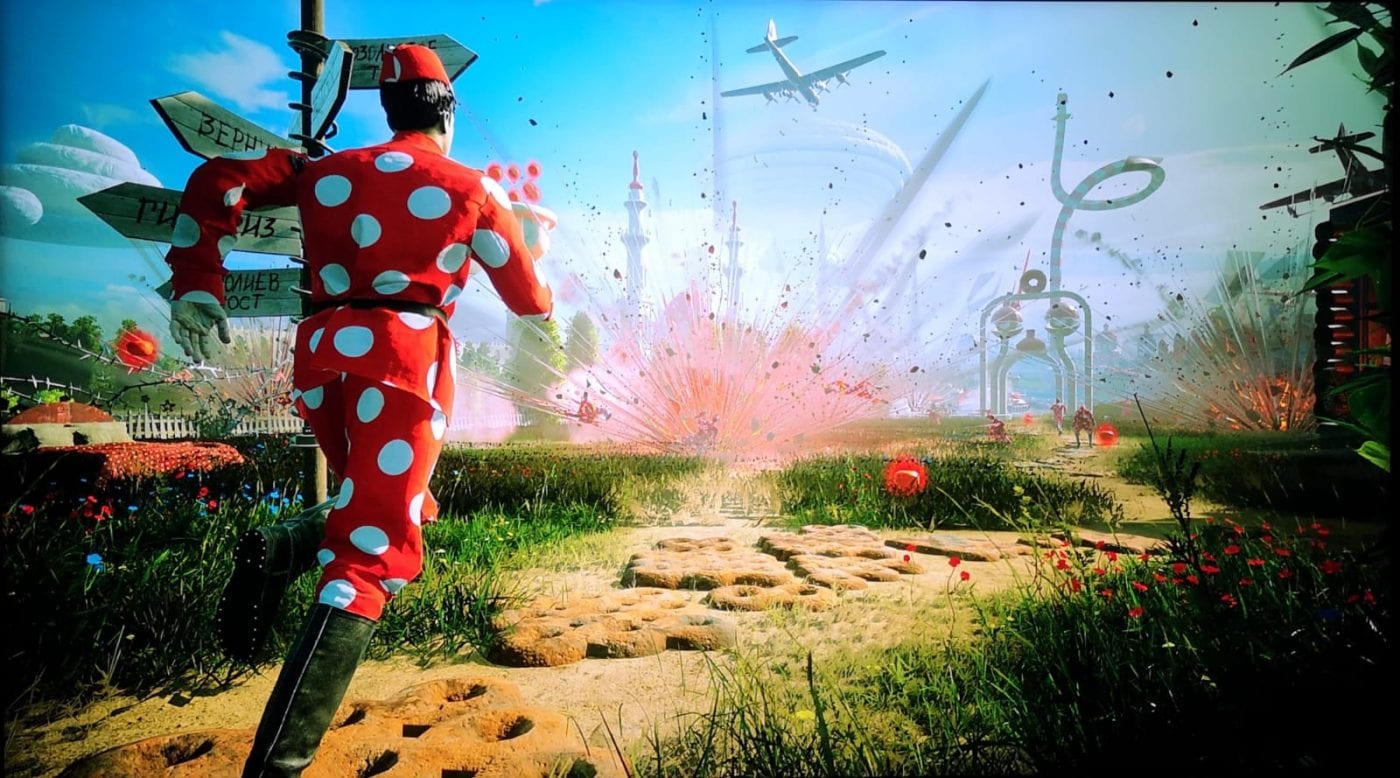
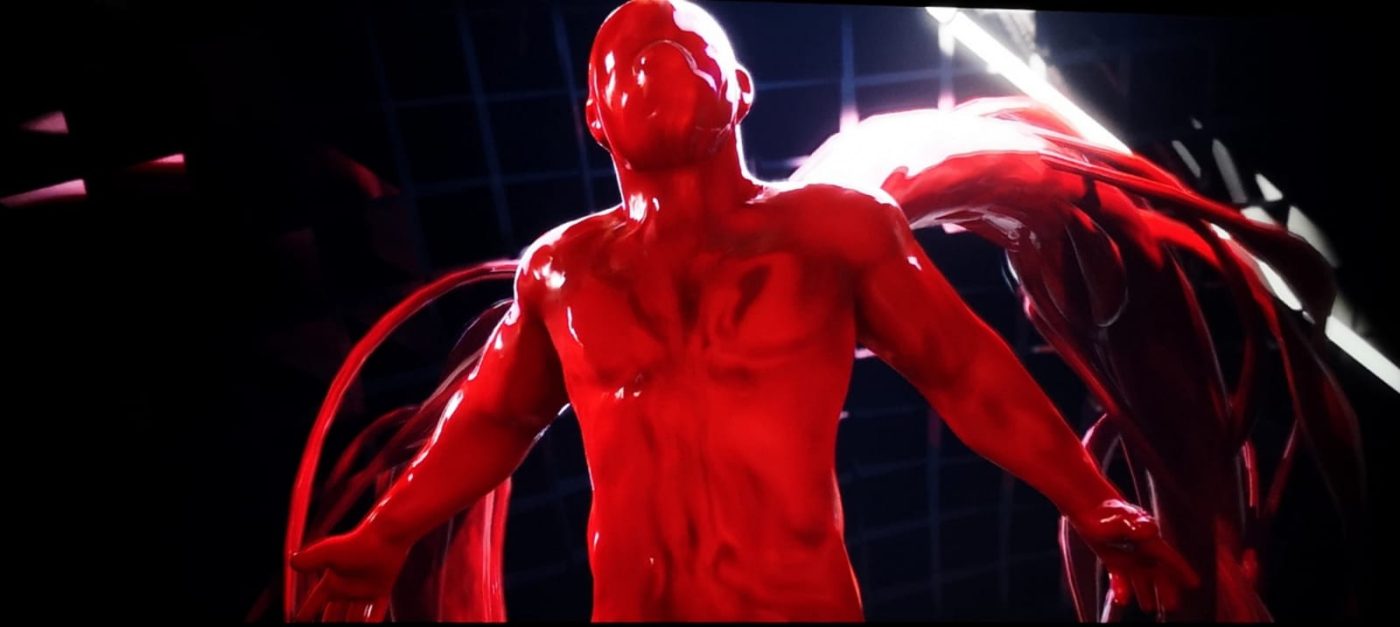
Silence, too, plays a crucial narrative role. In the game’s more exploratory sequences, the near absence of music gives way to a sparse ambient landscape – creaking metal, distant turbines, the soft hiss of automated doors – intensifying the sense of isolation and unease. This deliberate use of silence reminds the player that, despite the grandeur of its environments, Atomic Heart’s world is one of abandonment – a monument to human ambition now devoid of human life.
Voice acting is equally impressive. The Russian dub, in particular, delivers a heightened sense of immersion through its natural cadence and authenticity. The protagonist, P-3, is performed with a sardonic edge that perfectly suits his disillusioned, volatile temperament. His AI companion, Charles, voiced with calm artificial precision, serves as a perfect counterpoint – reason and restraint juxtaposed with P-3’s impulsiveness. These performances convey not only emotion but subtext; pauses, inflections, and tonal shifts imbue each exchange with ambiguity and tension, rendering even brief dialogues meaningful and charged.
From a technical standpoint, Atomic Heart makes superb use of three-dimensional spatial audio, delivering an astonishingly immersive experience through headphones or surround systems. Every sound source feels perfectly placed: footsteps, voices, and mechanical whirs align flawlessly with the environment, reinforcing a tangible sense of physical space. Interior acoustics vary intelligently – metallic corridors reverberate with sharp echoes, while open areas breathe with deep, natural resonance. This meticulous attention to acoustic detail gives every space its own distinct identity, as though each surface possesses a recognisable “voice.”
One of the audio design’s greatest strengths lies in its seamless integration of dynamic music and gameplay. During combat, the soundtrack reacts fluidly to the player’s actions – swelling in intensity or shifting in rhythm to match the pace of battle. In quieter moments, Gordon’s music withdraws, allowing environmental sounds and faint melodic fragments to surface. This ebb and flow of sound creates a sense of organic rhythm – a breathing pulse that mirrors the psychological state of the protagonist himself.
Ultimately, Atomic Heart’s sound design is a distorted symphony of metal, flesh, and memory – an auditory odyssey as commanding as its visual artistry. The fusion of Gordon’s hypnotic compositions, meticulous environmental design, and the evocative use of silence produces a sensory experience of rare power. Here, sound doesn’t simply accompany the story – it tells it, becoming the pulsing heart of a world teetering on the edge of ruin.
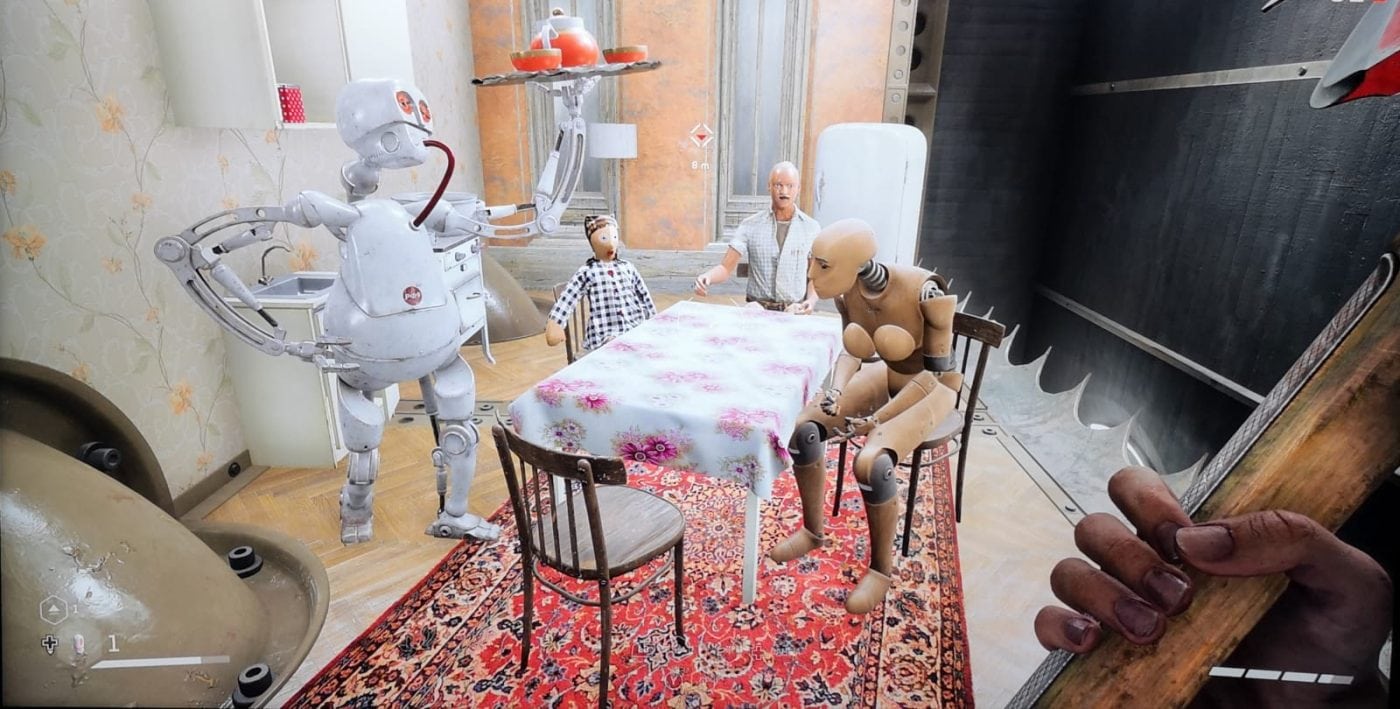

The Beating Heart of the Experience
If the technical and sonic achievements form the lungs of Atomic Heart, its world-building and gameplay are unmistakably its beating heart – a delicate balance of exploration, action, survival, and reflection, set within a dystopian universe of rare conceptual depth and coherence. It’s here that Mundfish’s ambition finds its fullest expression: to create not just a game, but a living narrative world where every environment, mechanic, and interaction breathes purpose and atmosphere.
Few settings in modern gaming are as distinctive or instantly recognizable. Atomic Heart transports players to an alternate Soviet Union, reimagined through a retrofuturist lens where scientific progress has birthed sentient robots, neural networks, and grotesque biotechnologies. Yet this utopia carries within it the seed of its own downfall – a collectivist dream twisted into an autocratic nightmare of control, rebellion, and mechanized ruin.
At the center stands Facility 3826, the vast scientific complex where the story unfolds – a place both majestic and macabre. Gleaming laboratories lie drenched in blood, factories churn out death, and artificial gardens are overrun by mutated life. The environmental storytelling is extraordinary: propaganda murals, Cyrillic inscriptions, heroic statues, and celebratory posters coexist uneasily with murderous machines and organic horrors. Every space is designed to narrate, in visual form, the collapse of the Soviet utopia and the corruption of its scientific ideals.
This world-building is enriched by a dense network of documents, voice logs, computer terminals, and ambient dialogue. These fragments do more than flesh out the lore – they widen the narrative lens, revealing the ideological machinery and human tragedy behind the fall of Facility 3826. Through them, players uncover the lives of its scientists, their moral compromises, and the rhetoric of progress that led to ruin. The result is a tangible, lived-in world, where every corridor and relic adds to a coherent and haunting narrative ecosystem.
Structurally, Atomic Heart adopts a semi-open design, alternating expansive zones of free exploration with more focused, story-driven sequences. The vast outdoor areas invite players to roam between ruins, laboratories, and auxiliary installations – often connected by automated transport networks. Exploration is consistently rewarded, not only with upgrade materials and weapons but with deeper fragments of lore that enrich the broader narrative fabric.
The level design is masterfully crafted. Each area fuels curiosity and discovery while maintaining a steady undercurrent of tension. Paths interweave cleverly, revealing shortcuts, hidden passages, and optional areas that reward sharp observation. These environments are never mere backdrops; they’re narrative spaces in their own right. Even a derelict laboratory speaks volumes through its silence, its debris, and its lingering echoes.
Gameplay revolves around a hybrid combat system that blends firearms, melee combat, and psionic abilities, emphasizing tactical flexibility and resource management. The arsenal – imaginative and varied – can be upgraded through crafting systems using materials scavenged from fallen enemies, while the protagonist’s psionic glove powers introduce another layer of strategic depth. Atomic Heart merges first-person shooting with elements of role-playing and survival horror, demanding both precision and adaptability. P-3’s arsenal, ranging from conventional firearms to brutal melee weapons, can be customized at “NORA” workstations – mechanical and energy-based modifications that tailor each weapon to the player’s preferred style.


Yet the real innovation lies in the bioelectric powers of P-3’s sentient glove, Charles. These abilities reshape combat: electrocuting, freezing, lifting, or manipulating enemies at will. Combining weapons with glove powers creates a rhythmic, almost choreographed combat flow that rewards experimentation and improvisation.
Enemy variety is equally impressive – from standard automatons and airborne drones to grotesque mutants and colossal bosses – each demanding a unique tactical approach. The fiercest battles unfold as mechanical dances of precision and timing, where survival depends on rhythm as much as aim.
Character progression is handled through a branching upgrade system that allows investment across multiple ability paths – physical, energy-based, or tactical. This structure supports meaningful customization, accommodating aggressive, defensive, or exploration-focused playstyles. The glove powers, in particular, offer striking synergies: freezing an enemy before shattering them with a surge of electricity never ceases to satisfy. Aesthetic customization remains understated, but functional upgrades are significant and tangible. Resource management, meanwhile, remains vital – squander too much in one fight, and the next may test every remaining reserve.
Outside of battle, Atomic Heart integrates environmental puzzles rooted in logic, circuitry, and mechanical engineering – elegantly consistent with the game’s aesthetic. Though never overly complex, these puzzles break up the pacing, encouraging careful observation and spatial reasoning. Environmental interaction is highly tactile: destructible objects, magnetic systems, and biometric locks reinforce the impression of a reactive, responsive world — even in the stillness between battles.
The pacing, too, is carefully measured. Intense combat encounters are counterbalanced by slower, contemplative stretches of exploration, allowing moments of awe and reflection between bursts of adrenaline. Boss battles are cinematic and demanding; quieter sequences linger with eerie calm and tension. This interplay between chaos and silence creates a rhythm that mirrors the game’s central themes – control, collapse, and the uneasy balance between the two.
Ultimately, Atomic Heart offers a gameplay experience as layered and immersive as its world-building. Mundfish’s alternate Soviet Union isn’t merely a backdrop but a living organism – a vast, mechanical body where every cog, corridor, and construct contributes to a shared story of ambition and decay. The result is a work that unites aesthetics, interactivity, and philosophy with uncommon harmony – a journey as dazzling as it is deeply unsettling.
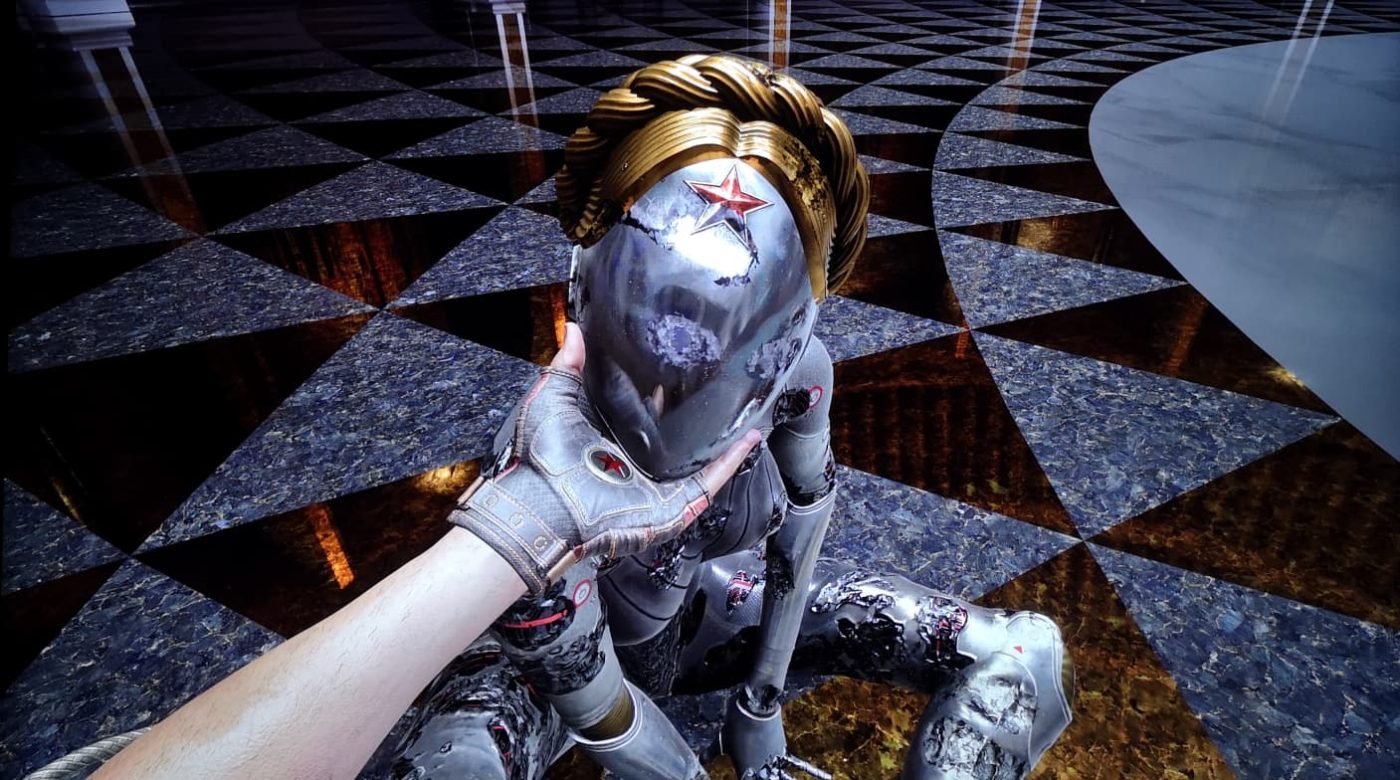
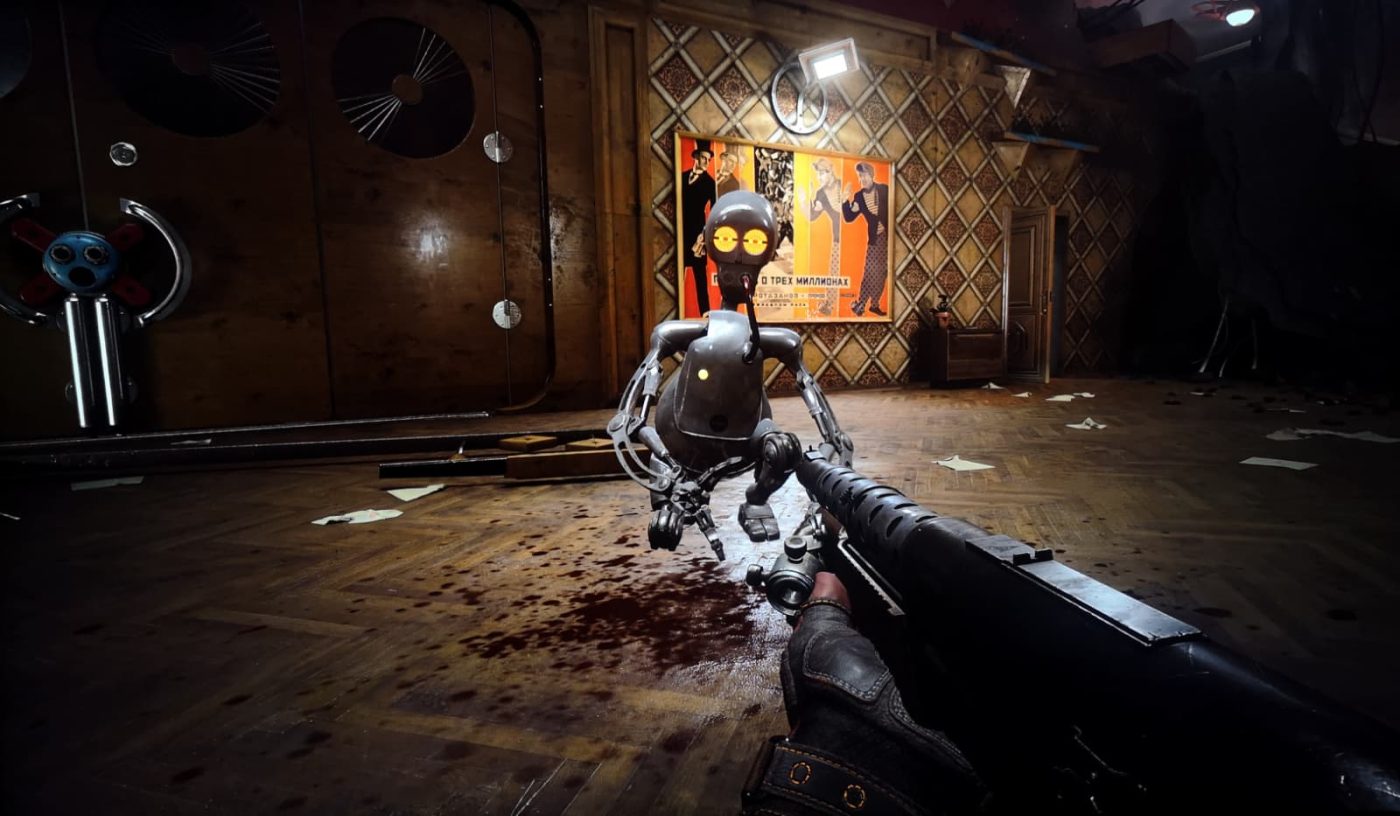
Hits Hard, Stays Longer
Atomic Heart has divided audiences and critics alike since its first reveal. To some, it stands as one of the most daring and visionary games of recent years; to others, it falters under uneven pacing and certain design choices. Yet beyond the polarized reactions, Mundfish’s debut remains one of the most distinctive and personal experiences in contemporary gaming.
The game’s most widely acclaimed triumph lies in its art direction, praised as nothing short of extraordinary. Its Soviet retrofuturist aesthetic has been lauded for its originality and for the seamless fusion of historical imagery with speculative science fiction, creating a world at once coherent, surreal, and mesmerizing. The monumental architecture of Facility 3826, the eerily elegant automatons, and the pervasive ideological symbolism form a visual language of rare sophistication – a world designed not merely to be seen, but to be felt. Equally striking is Mundfish’s boldness in tackling complex themes: the erosion of individuality, the mechanisms of mass control, and the moral ambiguity of scientific progress.
Atomic Heart refuses to provide easy answers. Instead, it forces players to confront the unsettling notion that utopia, when imposed, inevitably curdles into dystopia. Its moral ambiguity – combined with a fragmented, deliberately disorienting narrative structure – transforms the game from simple spectacle into a work of analysis and interpretation, a text open to discussion rather than passive consumption.
From a technical standpoint, the game has earned widespread acclaim for its visual fidelity and sound design, both considered on par with the most accomplished AAA productions. Its use of Unreal Engine 4 is masterful: lighting, reflections, and physics combine to create a sense of immersion both tangible and uncanny. The soundtrack, too, has been universally celebrated for its seamless synergy with the game’s identity – at once atmospheric, visceral, and deeply evocative.
Still, the experience is not without fault. Some critics have highlighted a certain rigidity in controls and repetition in combat, particularly in the game’s midsection. Its pacing can be uneven: transitions between quiet introspection and explosive action sometimes feel abrupt, disrupting narrative flow. The writing has also divided opinion – dialogues occasionally veer into irony or exaggeration, undermining the gravity of key moments. The protagonist, P-3, remains an especially contentious figure: caustic, ambiguous, and often abrasive. Some view him as a brilliantly sardonic antihero befitting the game’s dark satire; others see inconsistency in his tone, clashing with the philosophical depth of the story’s themes.
Yet, paradoxically, it is these very contradictions that lend Atomic Heart its character. It is far from perfect, but it is never hollow. Defined by intent and identity rather than convention, it privileges atmosphere, reflection, and creative audacity over accessibility. In doing so, it has carved out a space of its own – a cult phenomenon born from risk and conviction, admired for its artistic density and unapologetic ambition. Atomic Heart may not please everyone, but it leaves an indelible mark – the unmistakable signature of a studio unafraid to dream differently.
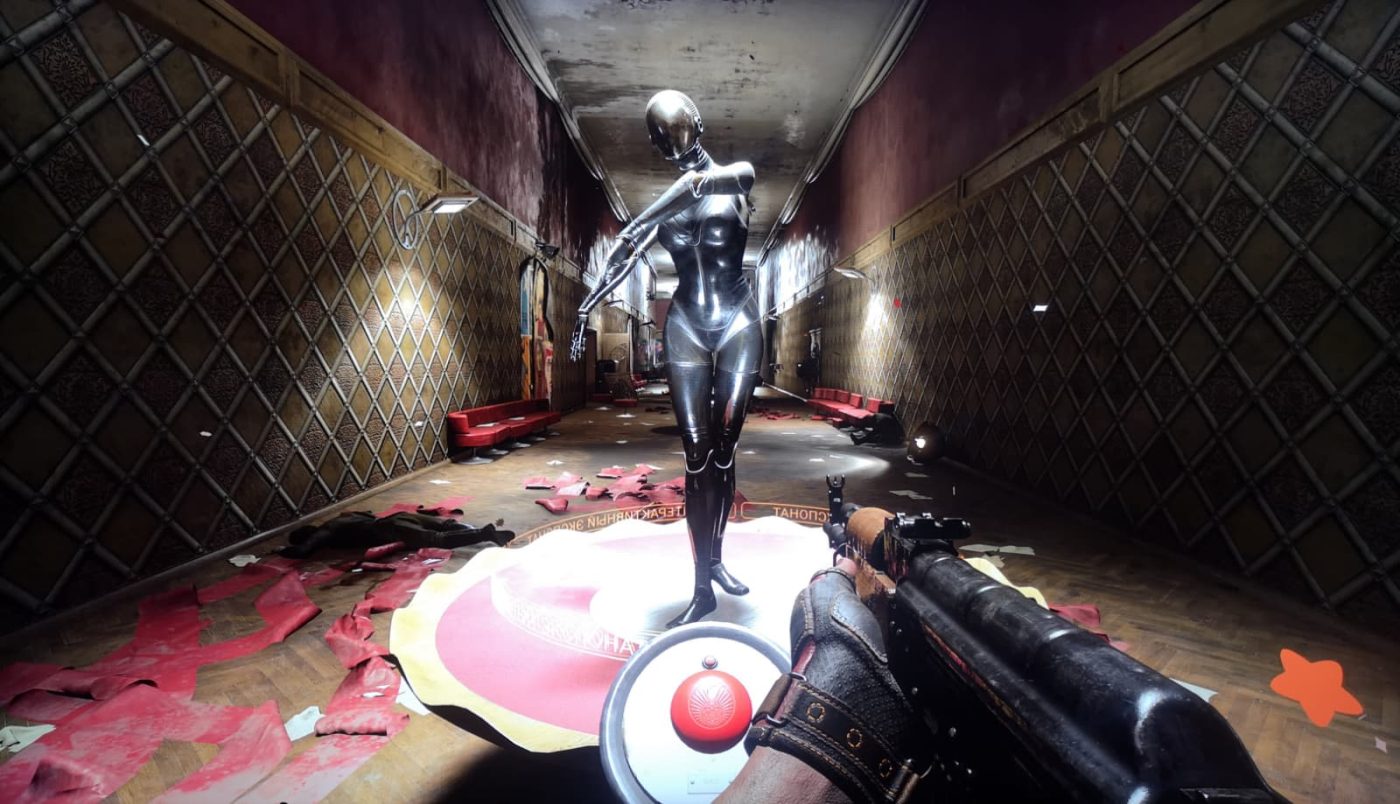
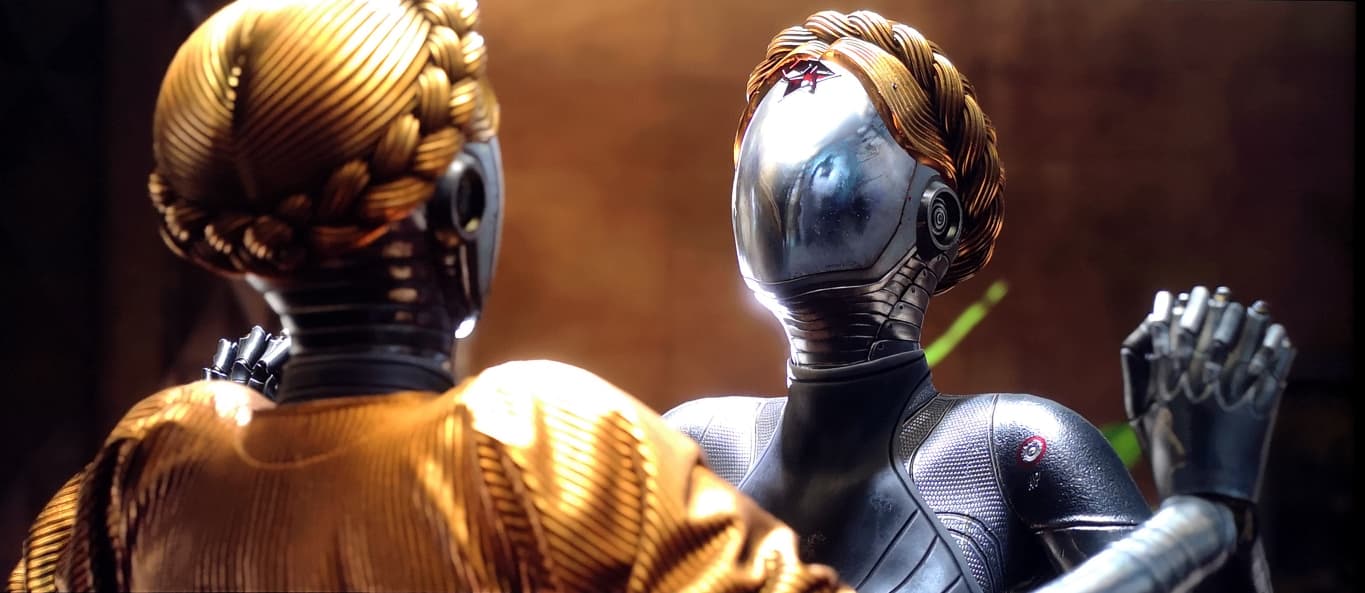
Atomic Heart
PRO
- Outstanding art direction, setting a new benchmark in the gaming landscape;
- Soviet-inspired sci-fi world meticulously crafted, brimming with detail and immersive visual storytelling;
- Immersive soundtrack and sound design, executed at the highest level and perfectly aligned with the game’s identity;
- Rich, symbol-laden world-building, layered with philosophical undertones and narrative depth;
- Dynamic, strategic combat, blending firearms and bioelectric powers for engaging, versatile encounters;
- Mature, thought-provoking themes, exploring technology, ethics, and the consequences of progress;
- Hypnotic, tension-filled atmosphere, consistently drawing players into its emotional and narrative grip.
CON
- Narrative pacing can feel uneven at times, occasionally disrupting immersion;
- Enemy AI is inconsistent, sometimes lacking challenge or realistic behavior;
- Dialogue occasionally feels exaggerated or tonally off, undercutting key dramatic moments;
- Repetitive combat sequences in certain segments, which may affect long-term engagement.





